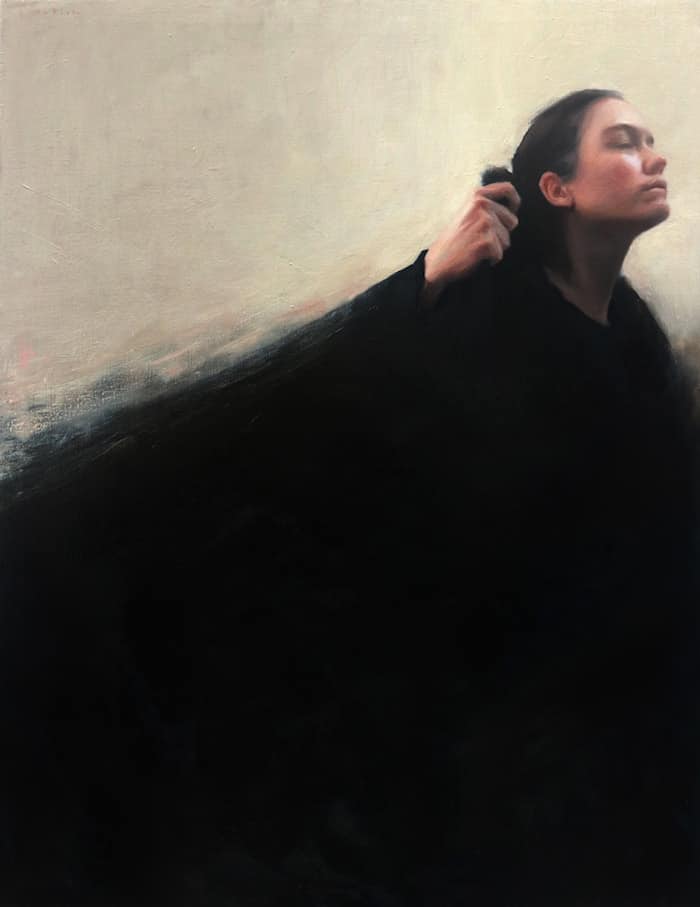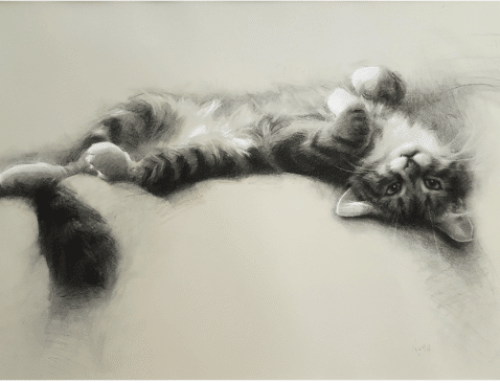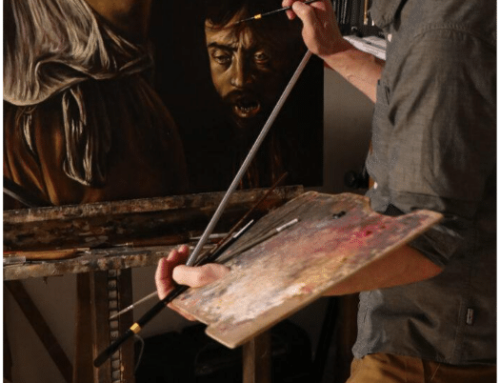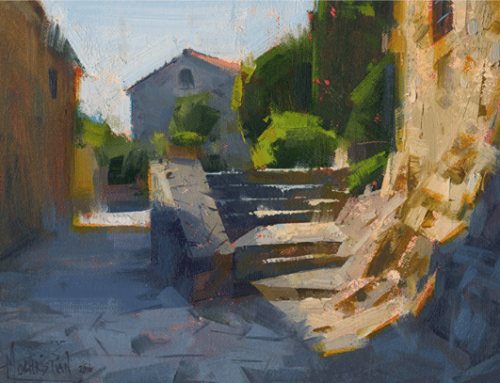This year, for its 16th Annual Salon, The Art Renewal Center (ARC) initiated the Inside Art Prize, adjudicated by Inside Art publisher Eric Rhoads and myself. I interviewed our first winning painter, Irene Antich, about her oil painting El Abrigo (The Cloak), which she created during the Covid lockdowns of 2020.
First, here are my judges’ notes for ARC’s Inside Art prize:
“I chose “El Abrigo (The Cloak)” because I felt it demonstrates an elegant marriage of the straightforward and the complex in combining personal experience with social relevance. The black cloak that grips, weighs and seems to exert its own web-like restraining force on the painting’s subject strongly evokes the heavy isolation imposed on us by the Covid pandemic. “El Abrigo (The Cloak)” exemplifies what I believe is one of art’s most important functions: to render strikingly visible profound shared experiences of contemporary life.”
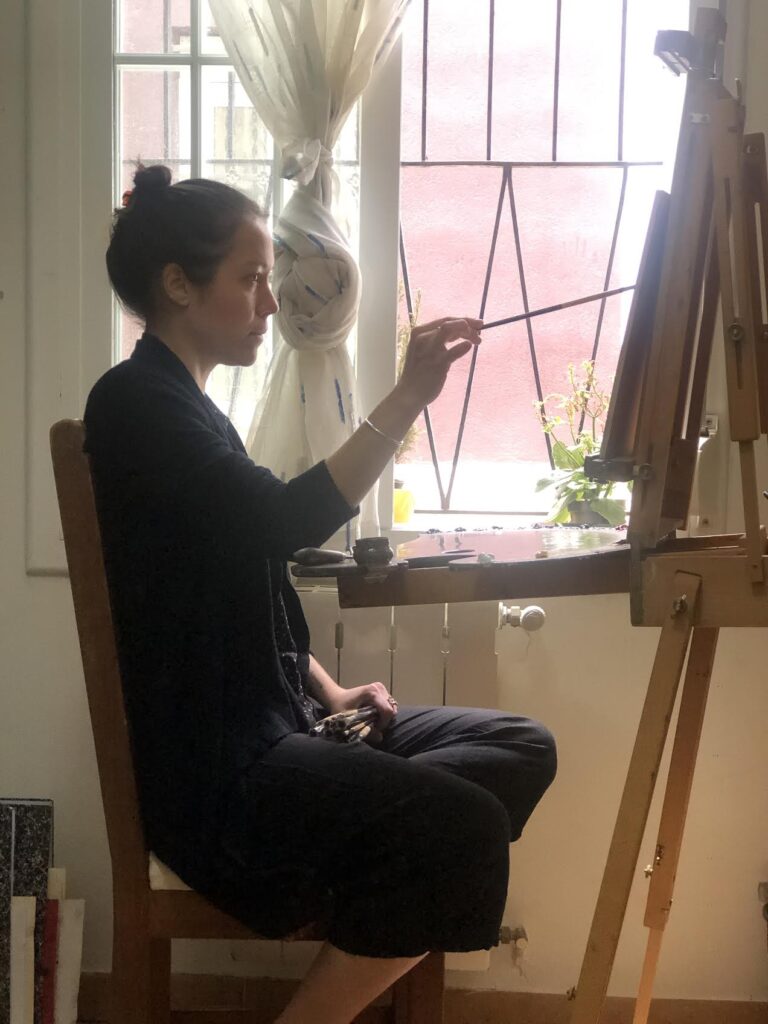
Irene Antich at work in her studio
Irene Antich is a Costa Rican artist, residing in Barcelona. After several years of study at the Barcelona Academy of Art, she specialized in drawing and figurative painting. She currently works in her studio in Barcelona, where she has been experimenting with her own pictorial language and with an inner exploration through painting.
Her passion and love for painting as well as for nature and animals has led her to develop a project helping animal rescue foundations through the sale of her paintings. She has exhibited her work in Costa Rica and Spain in various exhibitions in galleries and museums.
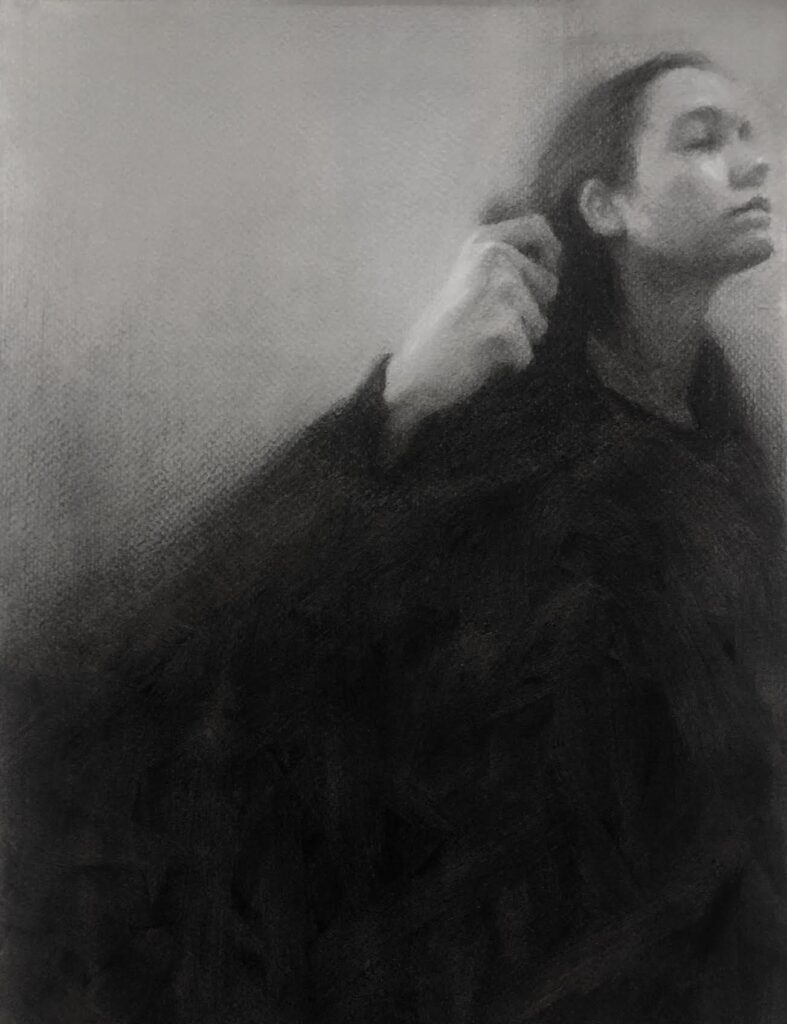
Irene Antich, charcoal sketch for El Abrigo
“As an artist, I think the work must move you and make you vibrate, but this about the feeling and not the meaning, the qualia of the work and not the discourse behind it. The works are loaded with who one is.
“In the search for the emotional portrait, a personal and intimate search, appealing to deep collective experiences, I don’t paint portraits, I paint emotions. I greatly admire well-painted artworks and although technical knowledge helps make expression more fluid and effective, it is not the ultimate goal.
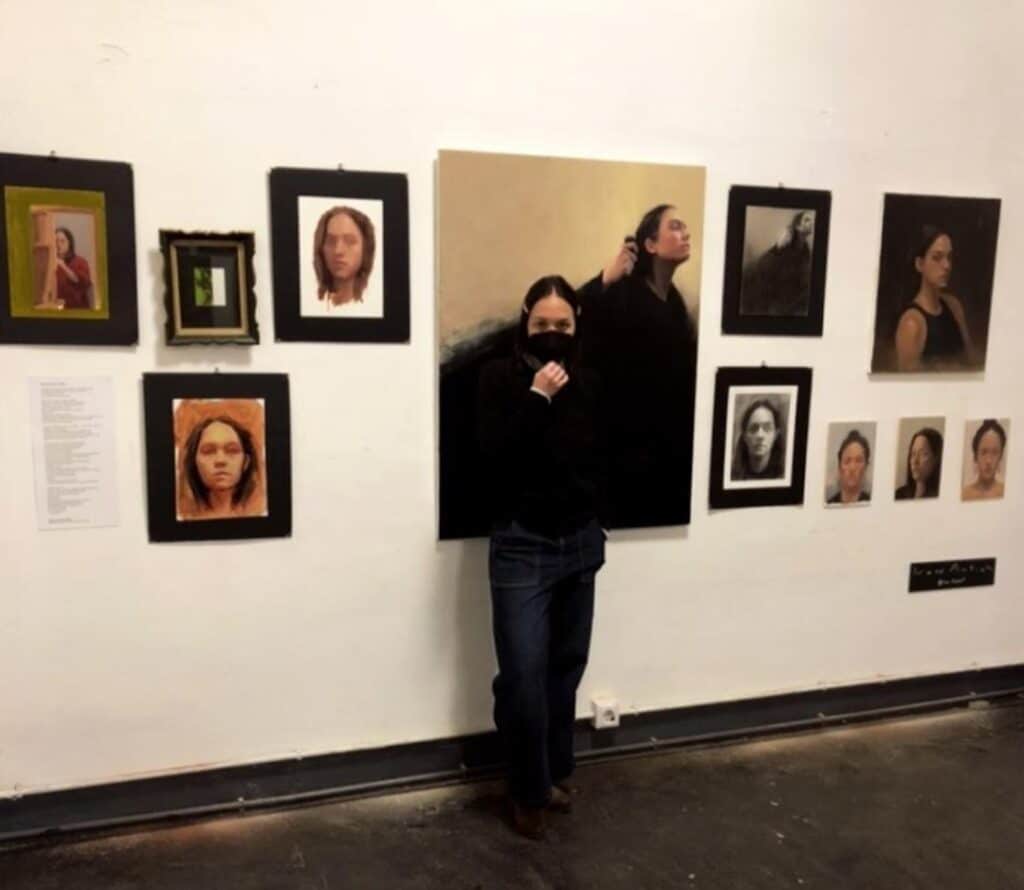
Irene Antich’s work on display, with the artist standing in front of her painting El Abrigo.
“As an artist, I was not afraid of confinement as such; on the contrary, it helped me to take advantage of my time. I painted or drew almost daily. I made many self-portraits, around 20, including El Abrigo. The news, on the other hand, was terrifying. Talking by phone with my family and hearing the fear in their voices was very sad. Being too aware of every sensation I had in my body, thinking any slight pain or discomfort could be a symptom of covid, I remember crying over a simple headache.
“Regarding the work El Abrigo, this is part of the work carried out in the worst part of the pandemic in Spain. A moment in which we all lived with great uncertainty and great fear, many individual and collective emotions were in the air.
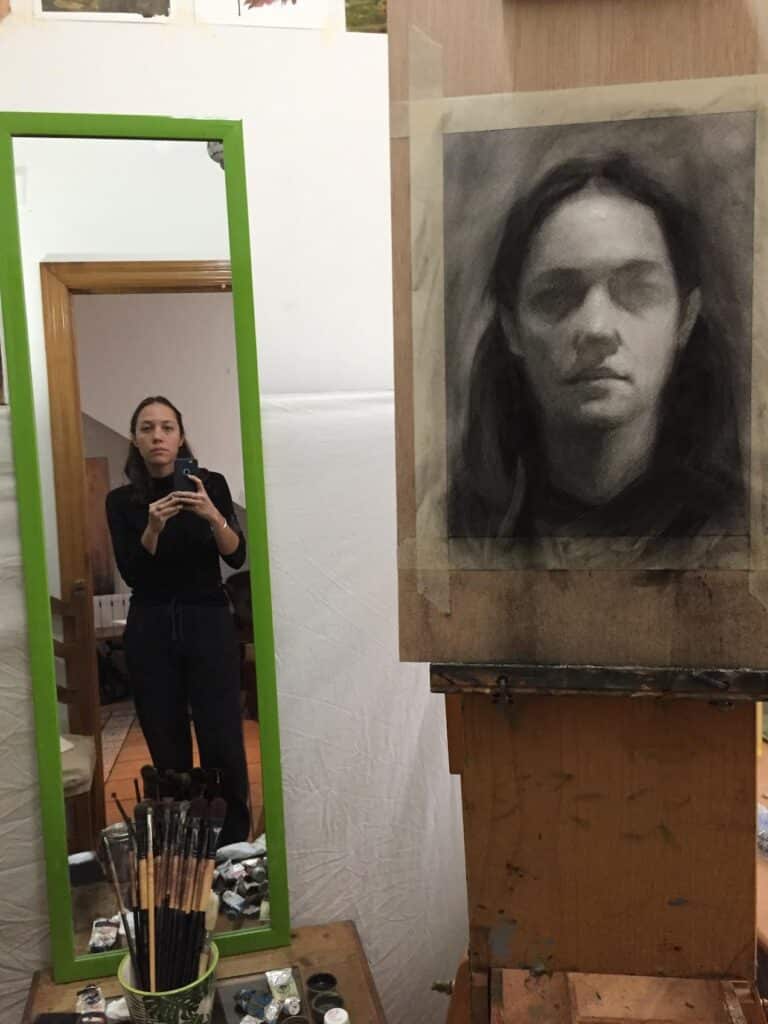
“The work is a self-portrait that evokes a feeling of wanting to go out, of moving, but there is a heavy cloak that the character is wearing, something that protects her and at the same time is difficult to carry. (It speaks to) the desire to want to leave but at the same time the need to feel protected and safe.
“The composition of the work is (deliberately) forced, creating tension and movement at the same time. I hope this emphasizes the duality of life: the great dark block contradicts the light space, like yin and yang, a reflection of how contradictory we are.”
For more insights into meaningful portraiture, check out Cesar Santos’ Secrets of Portrait Painting, one of our most popular videos of all time. Additionally, there’s a brand new video out in the Modern Masters Series on portraiture in watercolors by renowned artist Stan Miller. Check it out here.
Randall Sexton to Demo at Plein Air Live
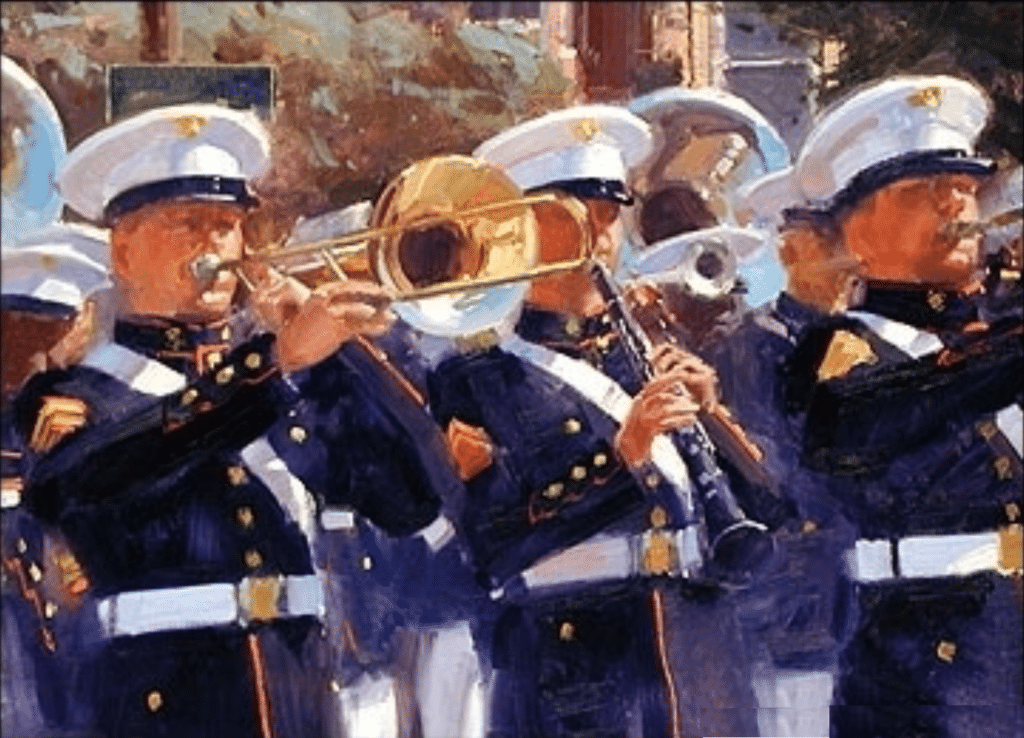
Randall Sexton, The Light is Precise, 30″ x 40″
Plein Air Live brings together some of the absolute best plein air artists and teachers in the country for a three-day immersion in all things plein air. Held March 9-10, 202, it is the largest ever online art training event. California oil painter Randall Sexton works both outdoors and in the studio.
Jean Stern, Executive Director California’s Irvine Museum of Art calls Sexton ” ‘painters’ painter.'”
“Randall is one of the premier contemporary California landscape painters, also paints still-lifes, figures, and portraits with equal mastery,” Stern has said. “His work evokes deep feelings, whether it’s the solitude of a deserted street at night or the exultation of a beautiful landscape, each speaks softly to the viewer.”
In just two weeks, Sexton will demo the simple, easy to follow foundation of his technique on day three of the Plein Air Live conference. Sign up here.

